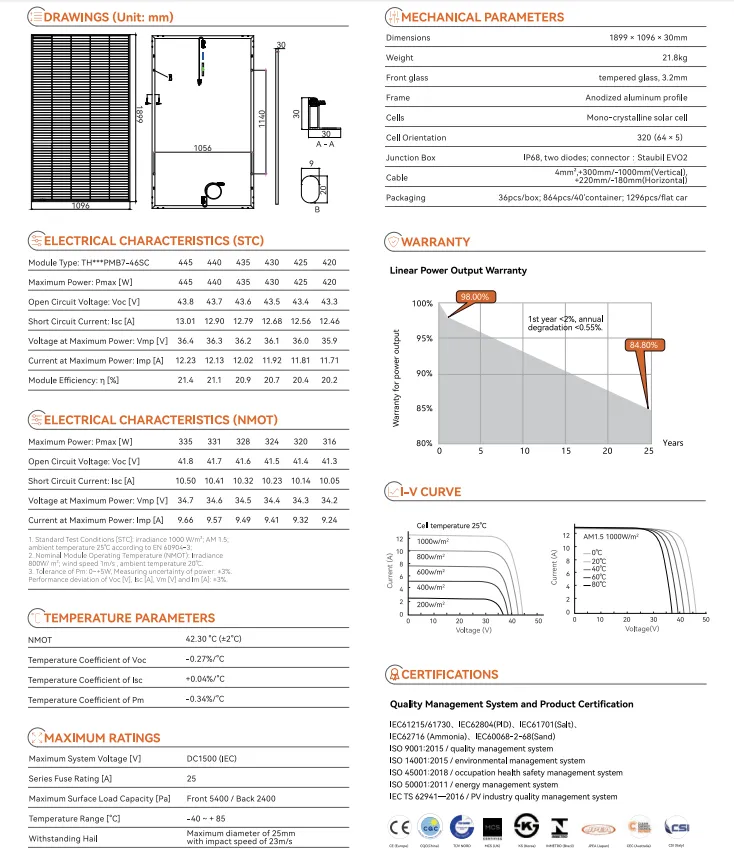Calculating Design Factors for Solar Inverter String Configurations and Efficiency
Understanding Solar Inverter String Design Calculations
Solar inverter string design is a critical aspect of photovoltaic (PV) system design, ensuring that solar panels and inverters work efficiently together to convert sunlight into usable electricity. This article delves into the fundamental calculations necessary for effective solar inverter string design, ensuring optimal performance and longevity of a solar energy system.
What is a Solar Inverter?
A solar inverter is a device that converts the direct current (DC) electricity generated by solar panels into alternating current (AC) electricity, which is used to power homes and businesses. Efficient inverter operation is vital for maximizing energy harvest.
Importance of String Design
In a solar PV system, multiple solar panels are connected in series to form a string. The string size and design directly influence the system's efficiency, energy output, and overall performance. Proper string design ensures that the inverter operates within its optimal input voltage range, thereby maximizing energy conversion and minimizing losses.
Key Factors in String Design Calculations
1. Panel Specifications Understanding the specifications of the solar panels used is crucial. Key parameters include the open-circuit voltage (Voc), nominal operating cell temperature (NOCT), and the short-circuit current (Isc). Each panel's characteristics dictate how many can be connected in series and how they perform under varying weather conditions.
2. Temperature Effects Solar panel voltage decreases with increasing temperature. To prevent system failures, it is vital to consider temperature derating. The lowest expected temperature in which the system will operate should be factored into design calculations to ensure Voc remains within the inverter's limits.
3. Voltage Compatibility The total voltage of the string (V_total) is determined by adding the voltages of each panel in the string. This should remain within the inverter's maximum input voltage (V_in_max). The formula used is \[ V_{\text{total}} = V_{\text{oc}} \times N \]
solar inverter string design calculations

Where \(N\) is the number of panels in series. The design must ensure that even at the coldest anticipated temperatures, the voltage is below the inverter's maximum input.
4. Current Considerations The current rating of the string is limited by the panel's Isc, as the same current flows through all panels in series. Thus, it is essential to ensure that the string current does not exceed the inverter's input current rating. The inverter's maximum input current (I_in_max) must meet the string current conditions, which is defined as
\[ I_{\text{string}} = I_{\text{sc}} \times N \]
Here again, \(N\) depends on the configuration.
5. Number of Strings If additional capacity is needed, multiple strings may be connected in parallel to the inverter. This method increases the system's overall capacity while ensuring that each string operates within its defined parameters. The total power output should be calculated as
\[ P_{\text{total}} = P_{\text{panel}} \times N_{\text{strings}} \]
Where \(P_{\text{panel}}\) is the power output of each panel and \(N_{\text{strings}}\) is the number of parallel strings.
6. System Losses It is essential to consider installation and environmental losses, including shading, dirt accumulation, and thermal losses. A common practice is to reduce the expected output by a percentage to account for these losses.
Conclusion
Proper string design calculations are crucial for the efficient operation of a solar photovoltaic system. By thoroughly understanding panel specifications, temperature effects, voltage compatibility, current limitations, and potential system losses, engineers and installers can design systems that maximize performance and reliability. As solar technology continues to advance, so too will the methods and tools used for string design, contributing to the overall growth and efficiency of renewable energy systems worldwide. Investing time and effort into the calculations during the design phase ensures long-term benefits, optimizing energy production and providing clean electricity for a sustainable future.
-
Unlocking Energy Freedom with the Off Grid Solar InverterNewsJun.06,2025
-
Unlock More Solar Power with a High-Efficiency Bifacial Solar PanelNewsJun.06,2025
-
Power Your Future with High-Efficiency Monocrystalline Solar PanelsNewsJun.06,2025
-
Next-Gen Solar Power Starts with Micro Solar InvertersNewsJun.06,2025
-
Harnessing Peak Efficiency with the On Grid Solar InverterNewsJun.06,2025
-
Discover Unmatched Efficiency with the Latest String Solar InverterNewsJun.06,2025







